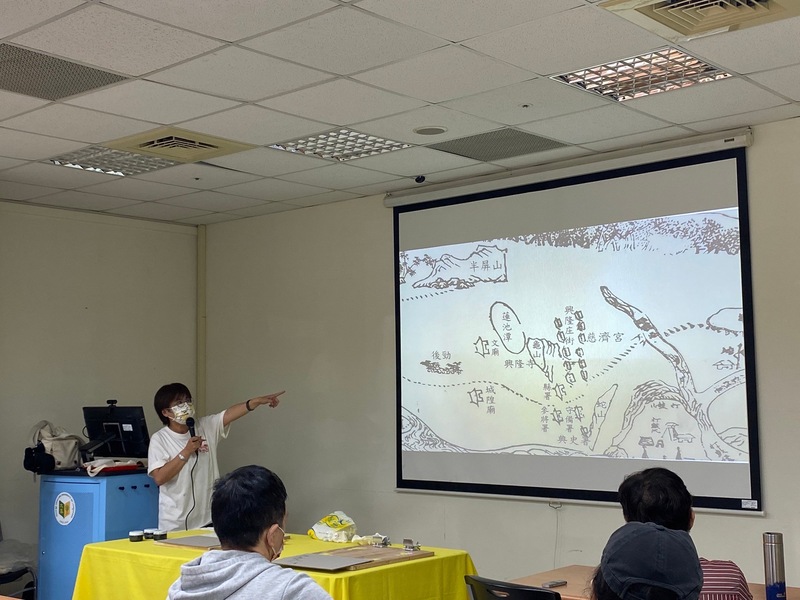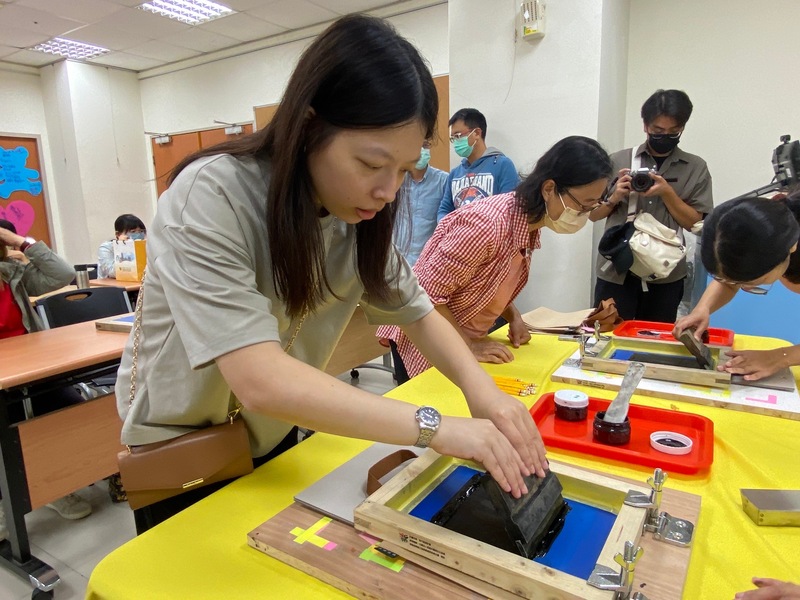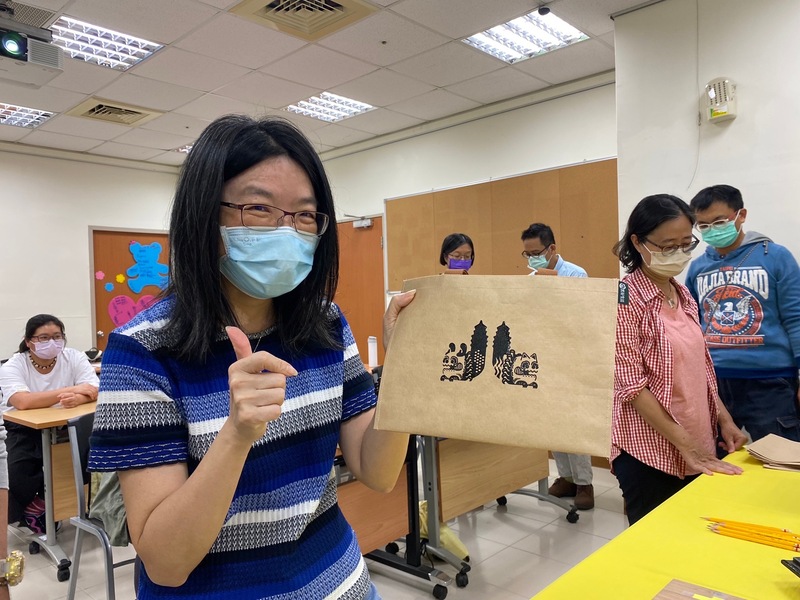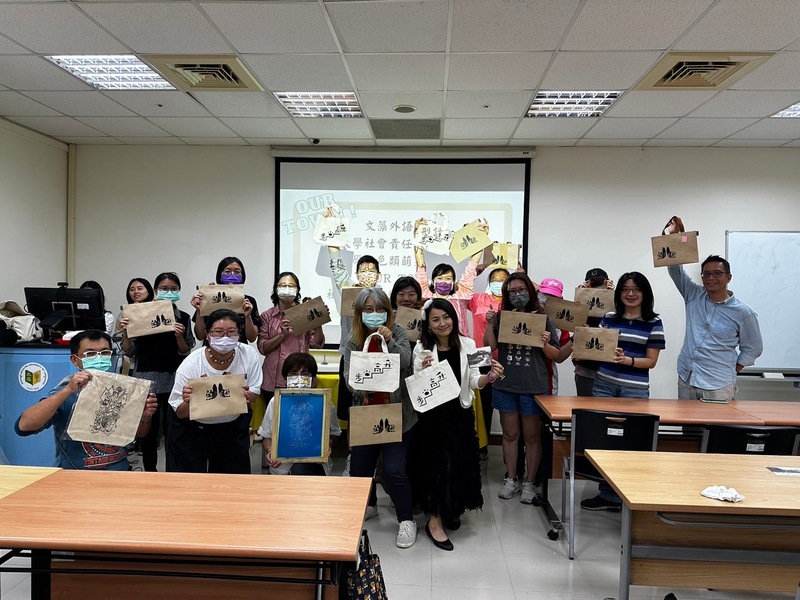by Rita Lin, Student
Wenzao Ursuline University of Languages' University Social Responsibility Practice Program, "OUR TOWN Community Sustainable Cross-Domain Collaborative Platform Project" has opened various co-creation communities this semester. Among them, the "Cultural Experience Design Community" team is fortunate to collaborate with the Kaohsiung Cultural Association, inviting teacher Zhang Biyu to Wenzao to demonstrate the production of silk printing and share related cultural and historical knowledge, allowing students to gain pleasure and a sense of accomplishment in a short period of time through hands-on experiences. The goal is for students to absorb abundant local culture and historical nutrients through listening to stories.
The cultural experience-related activities have now reached the third session. The current experience project is "Old City Tide Bags and Silk Printing." Unlike previous sessions, this time, participating students were first allowed to experience silk printing before listening to the cultural and historical story of the Dragon and Tiger Pagoda. In the experiential part, teacher Biyu first shared the origin, production method, and required materials of silk printing with the students. Through lively and interesting videos, she sparked the curiosity of the students. Teacher Biyu also explained that "silk screen printing is a kind of printing that has a very hand-made and warm feeling.” Simply put, it involves using a photosensitive plate to block the mesh outside the print on a silk frame. Then, ink is slowly scraped through the mesh with a scraper, and the pattern gradually appears. This craft has a wide range of applications, not only on fabrics but also on signs, tea sets, and even electrical appliances. Today, it is combined with modern plate-making technology, making it richer and more diversified.
The origin of the Dragon and Tiger Pagoda can be traced back to the Japanese colonial period when the Japanese forcibly opened the Shengli Road, separating the head and body of Guishan. The Yongqing Tower was built on the head of a small turtle, like a needle inserted straight above. Both seriously damaged the local Feng Shui. Therefore, in 1974, following the instructions of the main deity enshrined by Ciji Temple, the Great Emperor Bao Sheng, the temple began to build the Dragon and Tiger Pagoda to prevent future disasters. Teacher Biyu also explained from the perspective of folklore that the "Dragon" and "Tiger" are both closely related to Bao Sheng Da Di. According to legend, both "dragon" and "tiger" have a connection with Emperor Baosheng, because Emperor Baosheng healed the dragon's eyes and the tiger's throat. In order to repay the favor, the dragon and tiger promised to abide by the conditions and always accompany Emperor Baosheng. Teacher Zhang particularly emphasized that the opposite side of every waterside building is usually a temple. Buildings and temples have a deep and close relationship with each other, and they do not exist arbitrarily and without reason. Through the storytelling session, the students not only understood the reasons behind the construction of iconic buildings like the Dragon and Tiger Pagoda but also gained insight into many unknown folk stories about the Old Town, which are worth savoring.
The cultural experience activities of this project not only allow participants to "understand and interact" but also aim to let each participant experience the "cultural integration, transformation, and innovative variability" and the "original existence value and continuous inheritance." The third event of the "Cultural Experience Design Community" has officially concluded, and the last highlight of this year's plan will take place on December 18. It may bring different but even more enriching content! In the future,the "OUR TOWN Community Sustainable Cross-Domain Collaborative Platform Project” also looks forward to exchanging and collaborating with students, clubs, professional lecturers, and community units from various places, jointly planning and designing a more diverse range of cultural and historical experience activities to expand the scope of social responsibility practice.

Teacher Zhang Biyu from Kaohsiung Cultural Association told everyone the reasons and stories for the construction of the Dragon and Tiger Tower

Participants seriously experienced silk print making

Participant happily took a photo with the handmade product

The lecturer took a group photo with participants and community teams
